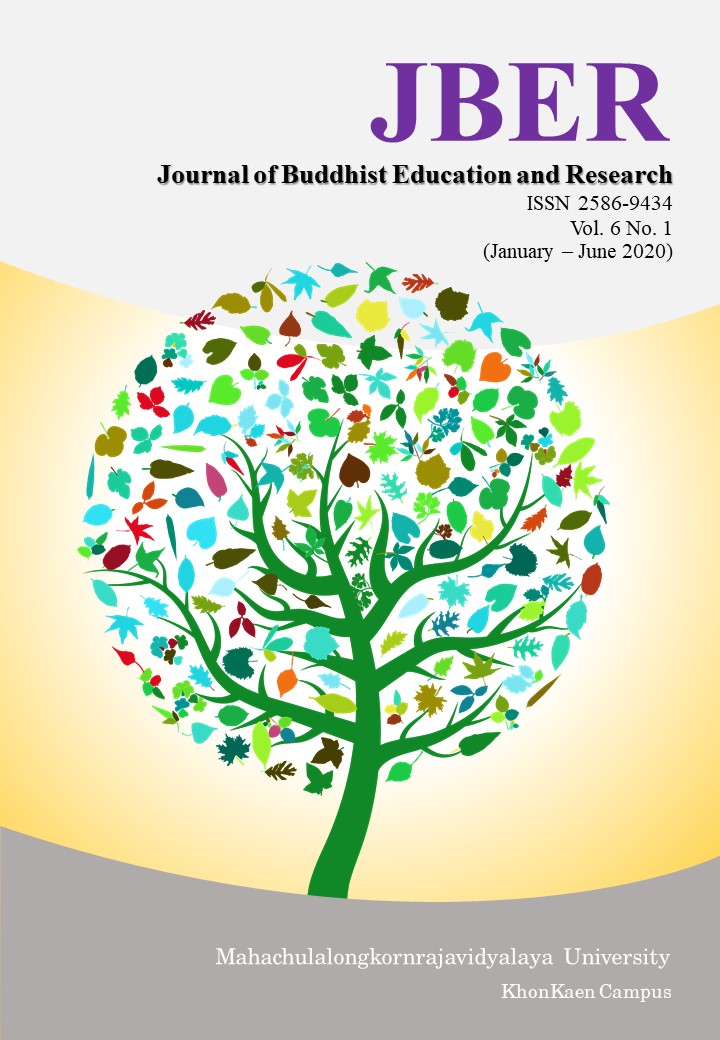THE ROLES OF LANNA SENIOR MONKS IN REGIONAL CONNECTION
Keywords:
Role of Lanna senior monks, connect, regional, concept and identityAbstract
The objectives of this research were as follows; 1) to study the concept and identities of Lanna senior monks(Krubamahahera), 2) to study their roles in connecting cultural route and, 3) to analyze influential relation and works of senior monks that had significant influence in education, Buddhist propagation as well as cultural and Buddhist network building. The qualitative research methodology was applied in this study by using document and textbook analysis.
The results were revealed as follows.
- According to the first research objective “to study the concept and identities of Lanna senior monks(Krubamahahera)”,the findings indicated that they were concentrated in studying proficiently the Vinaya (monastic discipline) and Tripitaka until they were able to collect and write in the palm leaf manuscripts. Moreover, the mentioned traditional Buddhist manuscripts were used for Buddhism propagation. 2) Because of the long-time reputation of their respectable and estimable behavior such as contentment and sacrifice, they have been respected and praised by Lanna people. 3.) The special characteristic of the word “Kruba” means a good practicing person who always does good deeds for Buddhist propagation by connecting various sciences to create Buddhist faith in people.
- According to the second research objective “to study their roles in connecting cultural route”, the results showed that; 1) The Tripitaka was collected and re-written in the ancient Buddhist literatures. 2) They pilgrimaged to many places in order to build and repair the religious places by cooperating with local community and nearby temples to make Buddhist center. 3) They built cultural route by propagating Buddhism in many foreign countries by establishing the Dhamma retreats. In addition, they taught and trained Buddhist meditation.
- According to the last research objective “to analyze influential relation and works of senior monks that had significant influence in education, Buddhist propagation as well as cultural and Buddhist network building.” The results were found as follows; 1) Building Buddhist culture from Buddhist belief towards Buddhist literature and government and ancient palm leaf manuscripts, both related educational organizations and specialists play the important role in Buddhist manuscript and literature interpretation and propagation. 2) The majority of important Buddhist places in Northern Thailand were repaired and reconstructed. It is considered to be Buddhism belief building of northern Thai Buddhists. Also, the construction of useful things such as road, temple, Buddha image hall, pagoda, monk’s residence and schools in Northern Thailand is considered to be a form of Buddhism’s cultural connection. 3) The various kinds of educational supports such as providing financial support for foreign Buddhist monks who are studying in Thailand, and building Buddhist successors for Buddhism propagation in the near future. 4.) Teaching the Buddhist meditation(Vipassana) and pilgrimaging in various northern Thai places as well as foreign continents such as Europe, Asia, and America are considered to be both Buddhism and ethnic connection building.
References
จรัส โฆษณานันท์. (2549). พระครูบาเจ้าศรีวิชัย อริยสงฆ์แห่งล้านนา. กรุงเทพฯ: ห้างหุ้นส่วนจำกัด มีเดีย เพรส.
เทพประวิณ จันทร์แรง. (2559). ปราชญ์ทางพระพุทธศาสนาในล้านนา. ใน สารนิพนธ์พุทธศาสตรบัณฑิต. กรุงเทพฯ: โรงพิมพ์มหาวิทยาลัยมหาจุฬาลงกรณราชวิทยาลัย.
มหาวิทยาลัยมหาจุฬาลงกรณราชวิทยาลัย วิทยาเขตเชียงใหม่. (2542). ชีวิตและผลงานของพระสิริมังคลาจารย์. เชียงใหม่: ดาวคอมพิวกราฟิก.
________. (2556). ตามรอยพระสิริมังคลาจารย์สังฆปราชญ์ล้านนา. เชียงใหม่: โรงพิมพ์จรรยาฟิล์ม.
มหาวิทยาลัยมหาจุฬาลงกรณราชวิทยาลัย. (2539). พระไตรปิฎกภาษาไทย ฉบับมหาจุฬาลงกรณราชวิทยาลัย. กรุงเทพฯ: โรงพิมพ์มหาวิทยาลัยมหาจุฬาลงกรณราชวิทยาลัย.
แสง จันทร์งาม. (2523). พุทธศาสนาในล้านนาไทย. เชียงใหม่: ทิพย์เนตรการพิมพ์.





